Flirting in the Victorian era was a very involved affair. Rather than the very direct ways that we might express our interest in someone today, looking for romance in the 19th century was about looking for one of the few socially-appropriate ways to engage with the opposite sex and then behaving even more carefully. I have covered several such scenarios on the blog, including the opportunity that both croquet and bicycling presented for unchaperoned fun. Both activities, however, require somewhat pleasant weather and might have been out of the question as night pursuits. But ice skating in the Victorian era extended flirting hours until late at night
The emergence of a new winter pastime
Before the bicycling craze, there was the ice skating craze. For both, it was a combination of technology and social dynamics that caused them to take off the way that they did.
Due to the Little Ice Age, there were more frozen natural waters in the 19th century. And while forms of footwear for sliding across frozen water had existed for centuries before the approach of the Industrial Era, they were not widespread. All that would change around the mid-1800s for two reasons: first, advances in the skates themselves allowed them to be more comfortable, safer, and more available to the masses. And second: societal norms were changing just enough so that men and women could interact under certain prescribed circumstances. Besides skating being seen as a morally-acceptable activity, it was difficult for unmarried individuals to be monitored on a crowded ice rink by an older family member who might not want or be physically able to keep up with them on the ice.
Ice skating became enormously popular in both London and New York City in the 1860s, with a rink opening in Central Park during the winter of 1859. It is with the opening of the Central Park rink that we see the best evidence of the societal factors that were encouraging the trend with the experiment of the Ladies Pond.
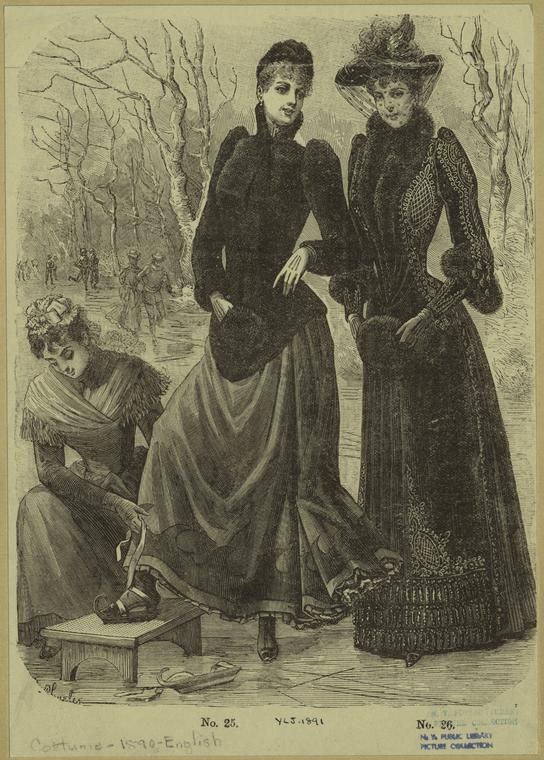
Ladies Pond? No thank you!
If you don’t believe that interacting in public with a member of the opposite sex was truly a new luxury in the Victoria era, the short-lived Ladies Pond in Central Park may convince you. Its inclusion in the new park is proof enough that innocent flirting or socializing could be seen as truly scandalous. Assuming that enough people would find it inappropriate for men and women to skate together, a separate rink was set aside for female skaters who wished to enjoy the ice in a most-proper way.
While a separate area was created for women to skate and rest separate from men, it proved so unpopular that it was integrated into the rest of the rink by 1870.
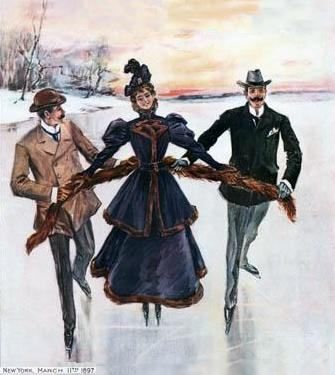
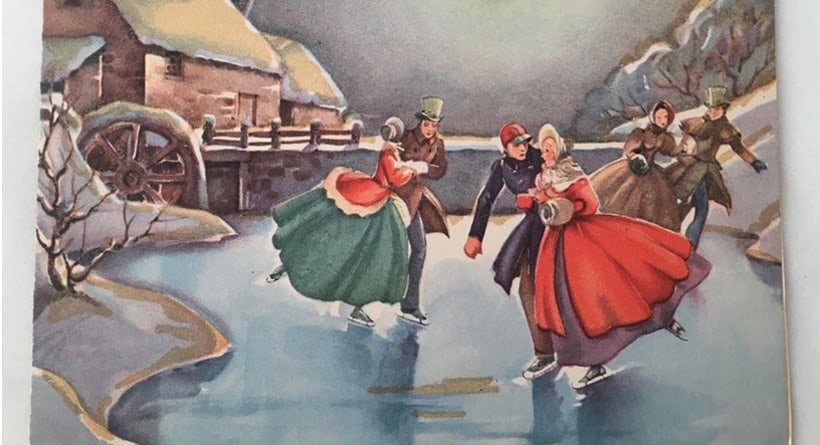
Skating sleds
An image that represents an idyllic Victorian winter is bundled up women being pushed around on the ice in a large, wooden sled. I love this image as it represents so much about the Victorian era. There is the notion of women as passive participants in leisure activity – there as enjoyment as much as for enjoyment. And there is the simple fact that we don’t have imagery showing men and women socializing together to this extent before the 19th century. These paintings show that such activity was quite common and that staying on the ice after dark was a normal winter activity.
I had first intended this post to be about the history of the skating sled and the various ways that it was used. It turned into a post about the general romance of the ice due to me finding such little information aside from artwork about the device. While I would have liked to take a deep dive into this aspect of Victorian ice skating, I think the images speak for themselves: it was an exciting time to be alive, to be enjoying cooler temperatures, and to be experimenting with changing societal norms.
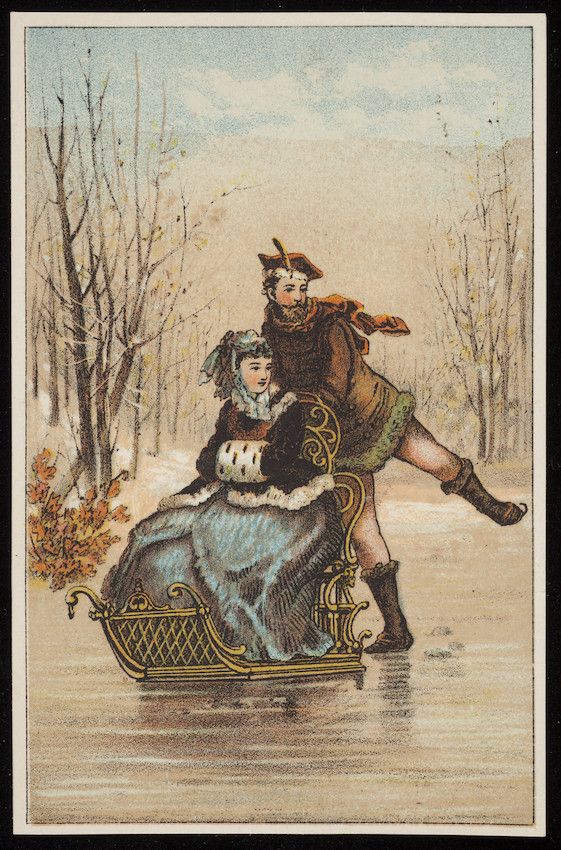
Do I see your bloomers?
Another way that we can see that ice skating was seen as an activity that was both wholesome and delightfully risque at once is the presence of bloomers and pantaloons in the depictions of ice skating in the Victorian era. It might not be obvious to all non-fashion history bloggers, but if you look closely, you will see that undergarments make an appearance in many of them.
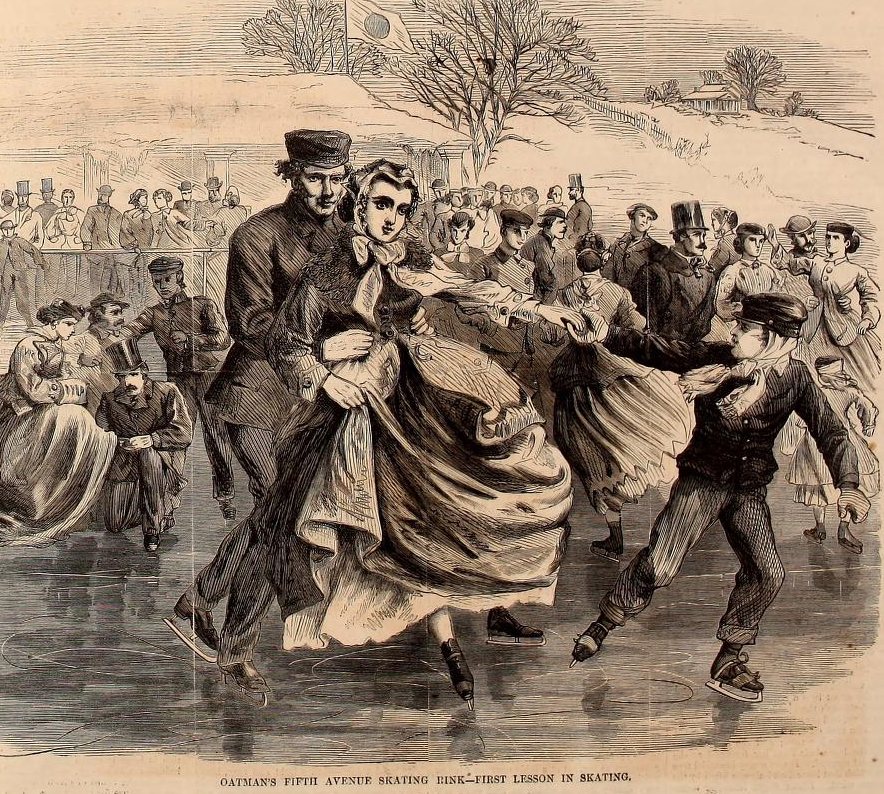
This detail says three things to me: first, it meant that men enjoyed this aspect of the ice skating experience and wanted to communicate that it happened to other men. It is likely that the images were created by male artists and given that they are highly idealistic, it means the chance of seeing a woman’s pantaloons was a part of that ideal.
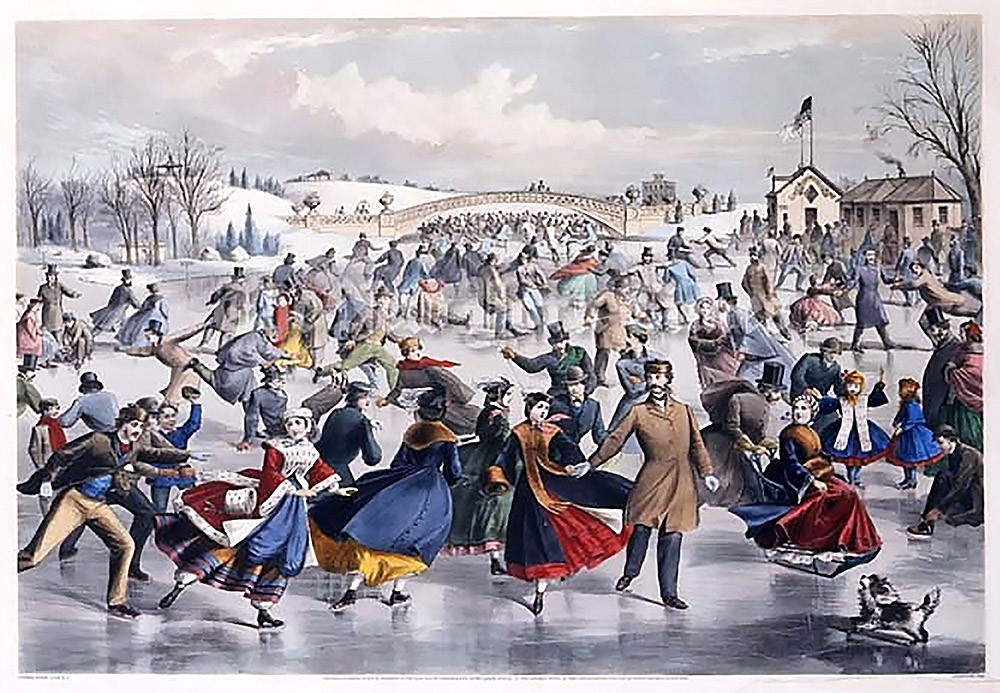
It also means simply that such exposure was becoming more tolerable, as many of the images of ice skating in the Victorian era were used for mass media purposes, and would only have been permitted had they been considered modest.
And third, it means that more women were enjoying showing a bit of (covered) skin. This is quite similar to what we saw with the croquet craze and the message that allowing a bit of ankle to show sent to those that one was socializing with.

Now that winter is arriving I am building my list of seasonal blog topics to dive into. What would you like to know about winters of the past?
Want to read more about romance in days gone by? You may enjoy these posts:
The Victorian Croquet Craze: crazier than you think
How crazy was the bicycle craze?

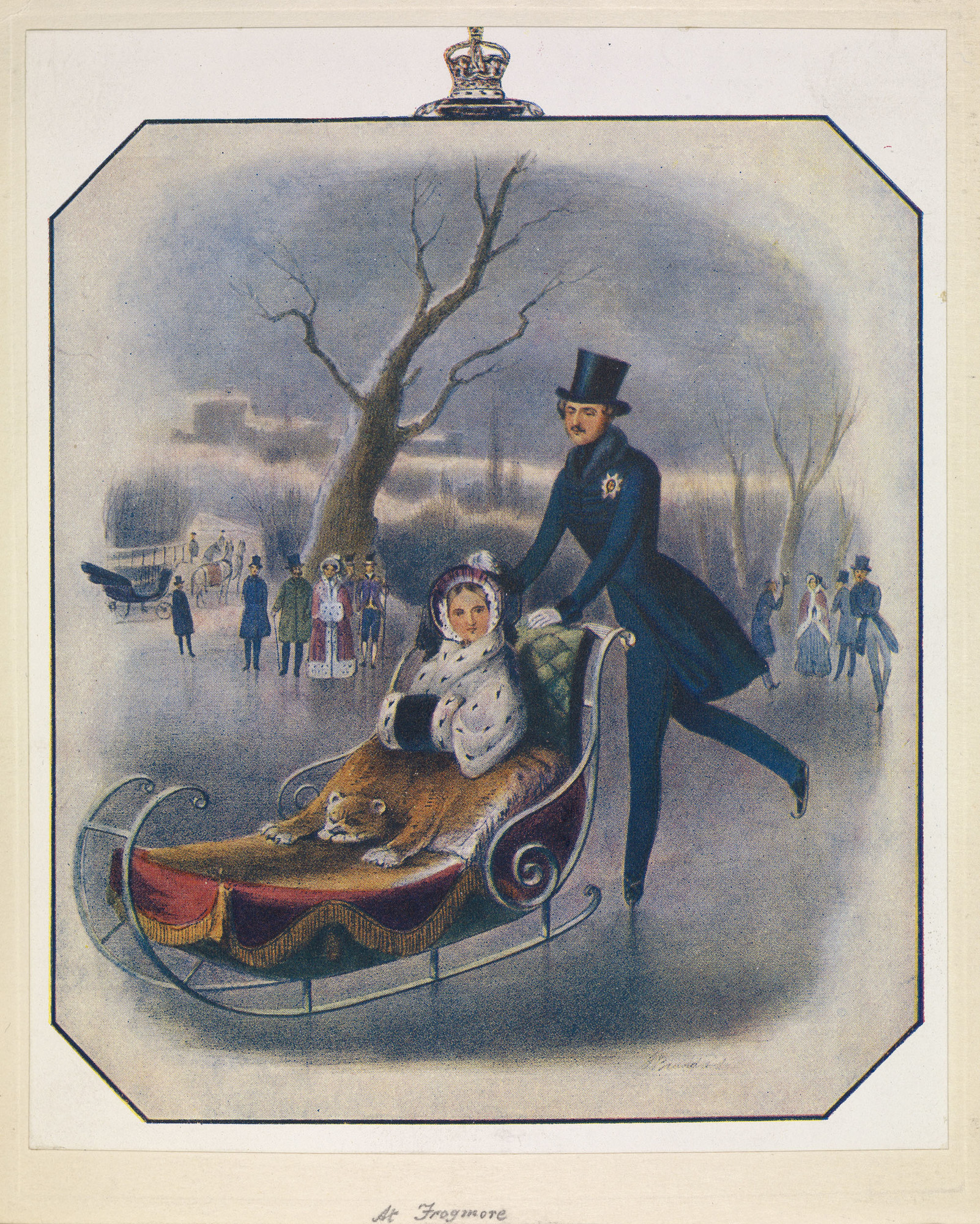


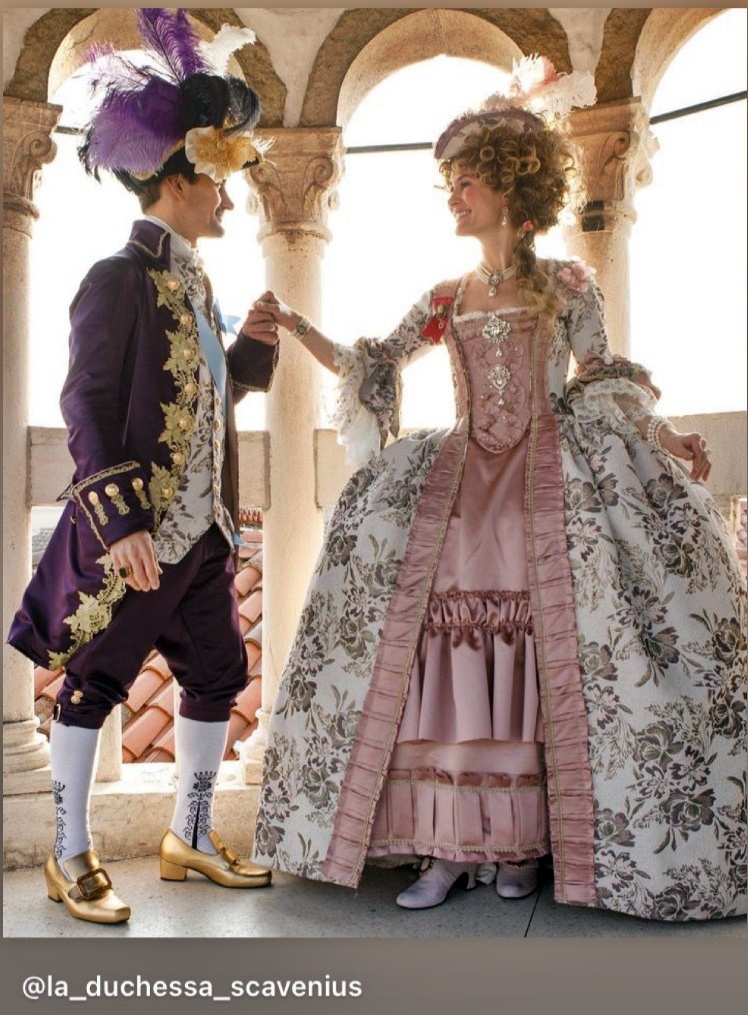
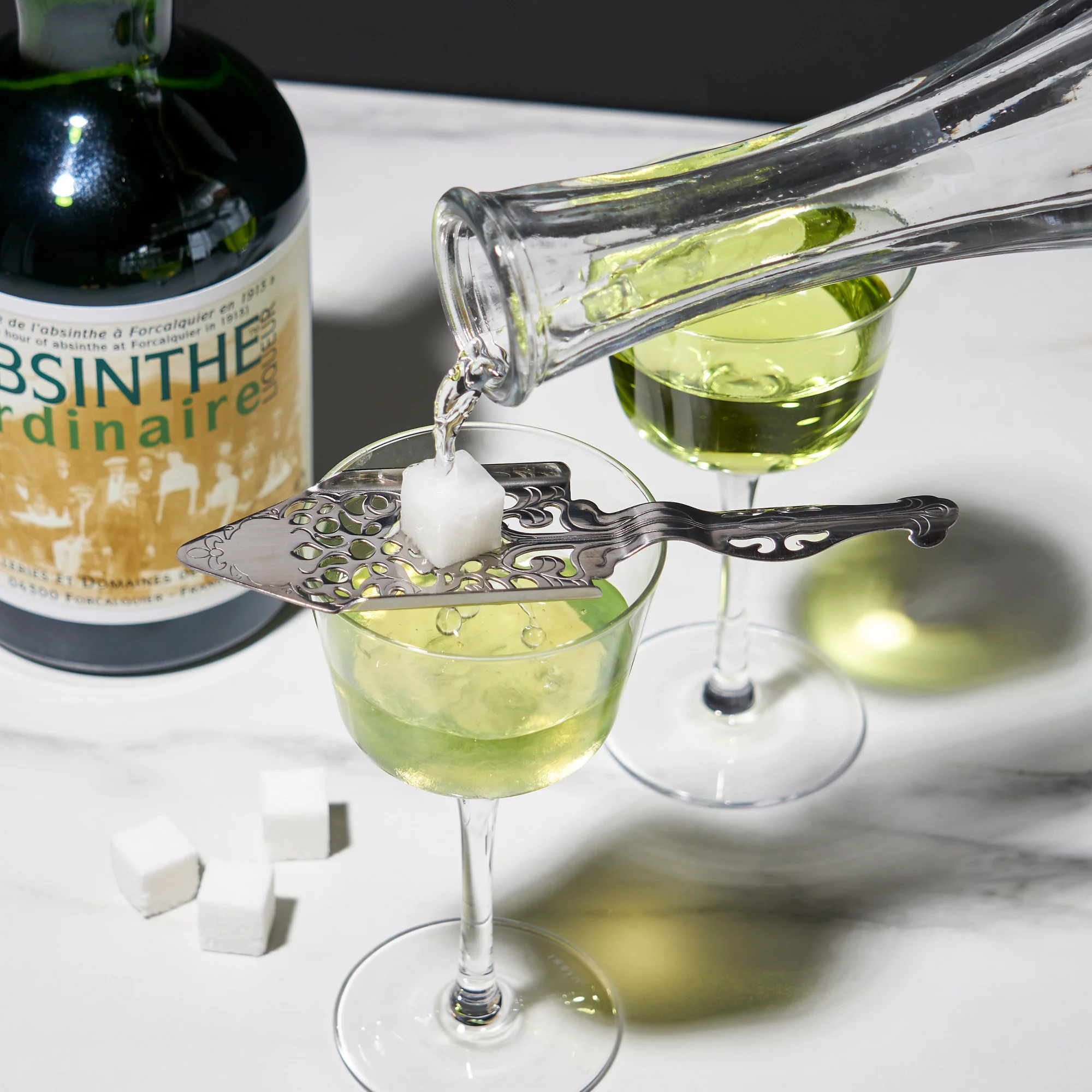



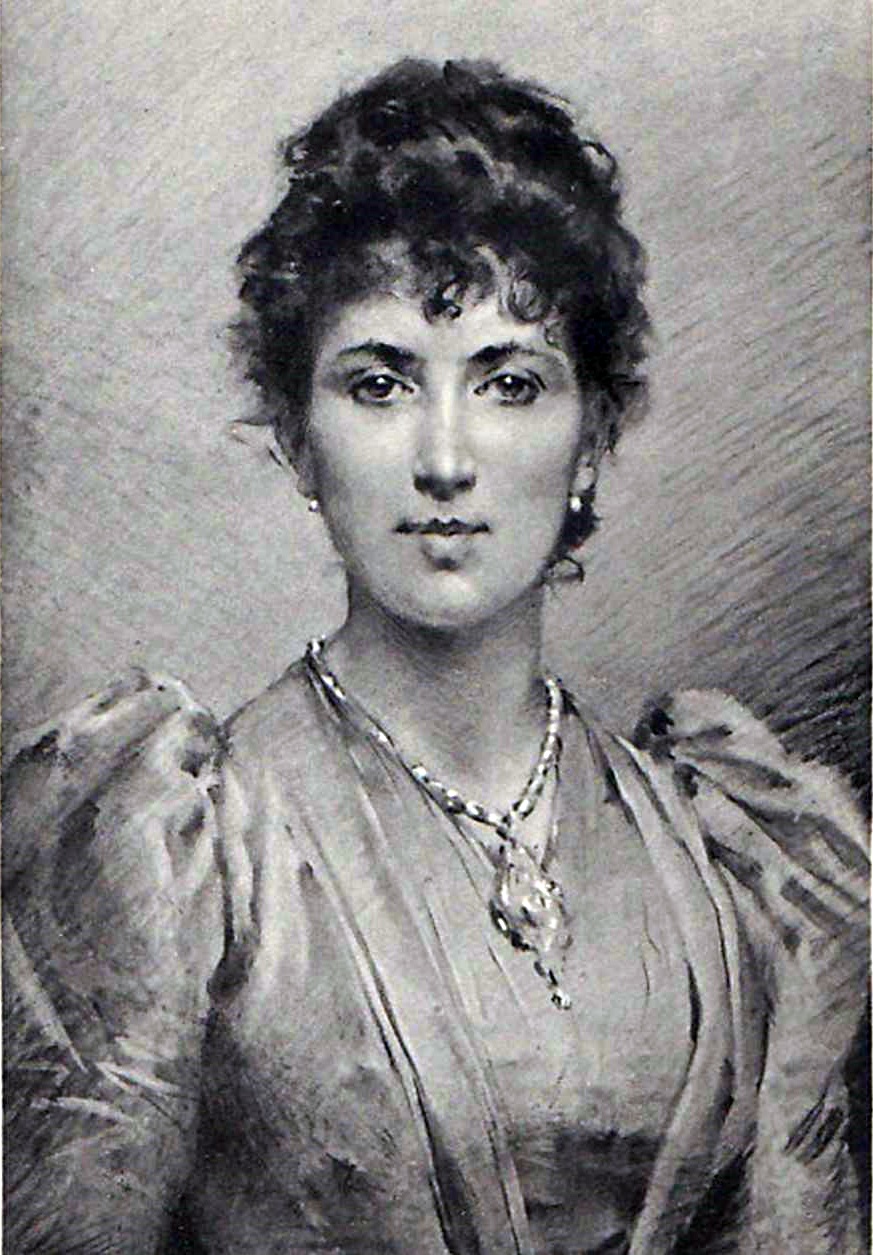




Leave A Comment